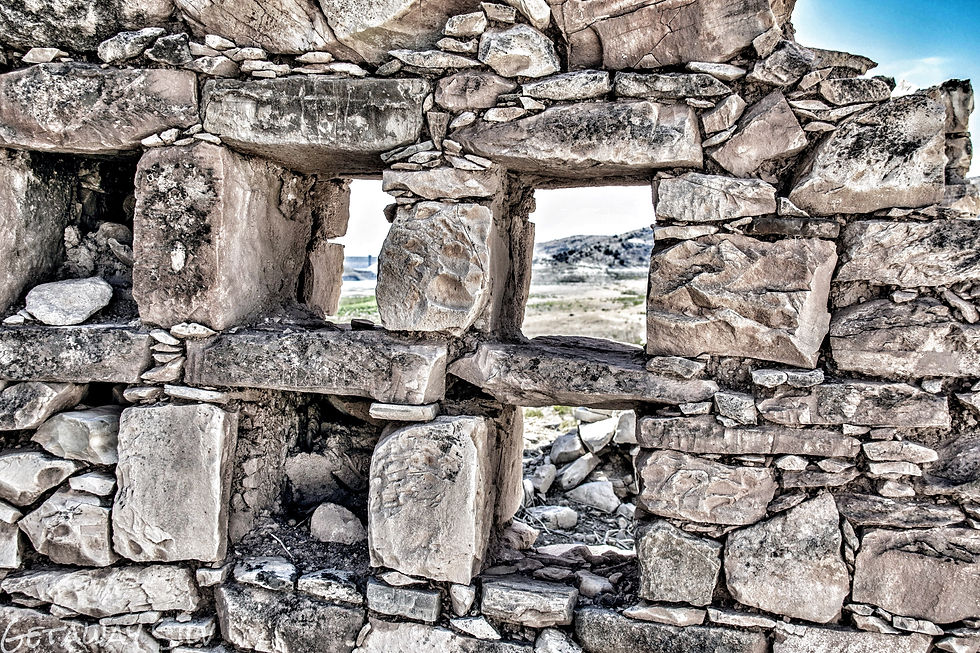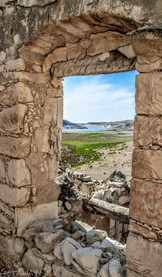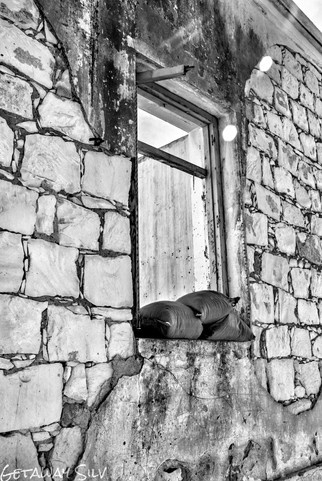The Ghost Town Of Foinikas
- GetawaySilv

- Oct 9, 2018
- 3 min read
My birthday always falls on a hot autumn day and this year we wanted to do something different than just having a meal so I suggested we should find and explore the lost and forgotten village of Foinikas.
I have tried to research the history of the place but alas most of the information is now lost, stories were taken to grave and the once wealthy village was left to decay.
Foinikas was supposedly founded by the Knights of Templar in the 12th century and used as the capital of the their administration to control and govern the provinces of Paphos and Limassol and continued to live until the island's independence in 1960.

We had a hard time finding the village and our car was not really suitable for the narrow and bumpy hidden roads so a few kilometers away Asprokremmos dam we abandoned it, next to an empty field, to continue our expedition on foot. Luckily the sun was no longer burning hot and the air was breezy whilst we were walking up and down the hills, following the hoof prints of the goats on the dusty roads. In about 10-15 minutes we took our first glimpse of the ruins in the valley. Even though the summer was over the fields were still more yellow and brown than green but in spring time you can admire thousands of flowers and lush greenery around the crumbling stones. I was captivated by the sheer isolation and century old stonework so I hurried up my steps to get there faster. Emma obediently ambled behind us but did not seem to be amazed by the place itself, however that has changed soon enough.

For many years the village was home to many Turkish Cypriot merchants living a wealthy productive life from making and selling silk. Until the 1974 coup d'état and Turkish invasion almost 50 families settled there and later on were forced to leave their homes and move to the North. Only very few people remember their names now, the history of Foinikas is slowly but surely turning into dust before our eyes.
The oldest part of Foinikas built entirely of stone on an elevated position above the river. The thick walls and fortress shape was meant to discourage any potential attacks.
Most of the houses had indoor wood fire oven, large arches and stone staircases which proves the idea of the once rich lifestyle of the village.

The upper part of the settlement was built more recently, when the government replaced the fled inhabitants with Greek Cypriots. However they were forced to vacate once the dam was built and flooded the village occasionally leaving it unsafe to live. Since then Foinikas is an abandoned memorial only.
There was some evidence of human presence in the newer part however, black plastic covered couple of windows, and a dirty mattress stood by the wall but more worryingly barbwire, gunshot holes and sandbags reminded us of the sad and bloody past even though I find it unlikely they had anything to do with the Turkish - Cypriot conflict.

There were few lines written in Turkish next to a broken door but unfortunately apart from the dates I could not translate it. This house definitely had an eerie unsettling atmosphere however it caught Emma's attention who then decided to talk about this part of the Cypriot history in her school.
It was definitely an interesting day trip feeding my appetite for abandoned places and I already know that I want to visit Foinikas again when it's all covered with a colorful flower carpet.







































Comments